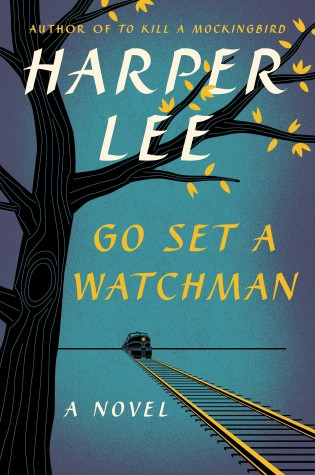Book Review: Go Set a Watchman

August 25, 2015
Harper Lee, an American novelist, is known for her one and only book, To Kill a Mockingbird, a Pulitzer Prize-winning novel. This past summer on July 14, Lee surprised us all with releasing a sequel to To Kill a Mockingbird titled, Go Set a Watchman.
In just the first 13 pages, Lee drops a bombshell on her readers concerning a former main character from To Kill a Mockingbird. By doing so, the readers become intrigued and progress deeper into the plot.
In this novel, Jean Louise Finch (formerly known as Scout) is 26 and coming home from New York to visit her father. She finds that while she has been away from home, there have been many changes in Maycomb; not just visibly, but within the people as well.
One of the great wonders of Lee’s writing is her ability to paint such a vivid picture of a time period by telling a story and teaching her readers a lesson or two, not only about the time period, but about life in general.
As Jean Louise struggles with her conscience, her eyes are opened to the world she left behind. She discovers that the person she trusted most in the world, someone she could always count on to make wise and righteous choices, is not as perfect in his doings and beliefs as she thought.
Some may become angry about such a beloved character’s change in, well, character, but those people may be missing the point. All her life Jean Louise relied on her father’s conscience as much as her own. She worshiped Atticus and forgot that he was human too, that he makes mistakes too, she forgot that it is okay to disagree with someone you love so dearly and that it is possible to see things in a different light, maybe even a better light, than that of someone so close to you.
In just 278 pages, Lee shows her readers three different viewpoints of the 1950s in regards to African American rights. First, the perspective of Jean Louise, the narrator: “You deny them hope. Any man in this world, Atticus, any man who has a head and arms and legs, was born with hope in his heart… Their a simple people most of them, but that doesn’t make them subhuman…I wonder what kind of miracle we could work with a week’s decency.”
Second, the point of view of a stubborn, usually wise, old man named, Atticus Finch, “There’d be another reconstruction. Would you want your state government run by people who don’t know how to run ‘em? All the NAACP cares about is that man’s vote.”
And lastly, through Jean Louise’s visit with Calpurnia we see a sliver of what is the popular belief of the African American Community in the story. The main character is our eyes and ears and she sees and hears a lot.
Lee is not afraid to write the truth and in doing so tells a story related to history and captures emotion in a way that is awe strucking. Truly inspiring, Lee will forever be remembered as someone that brought so much life, light, and love into the world of literature.







